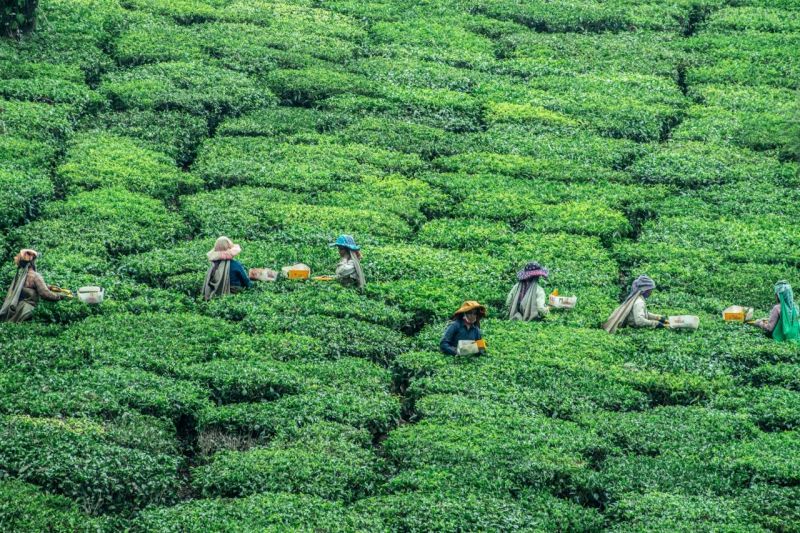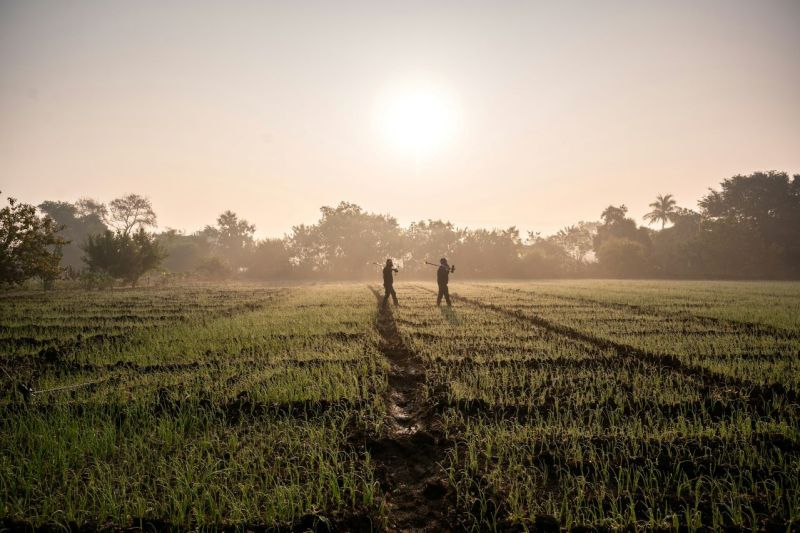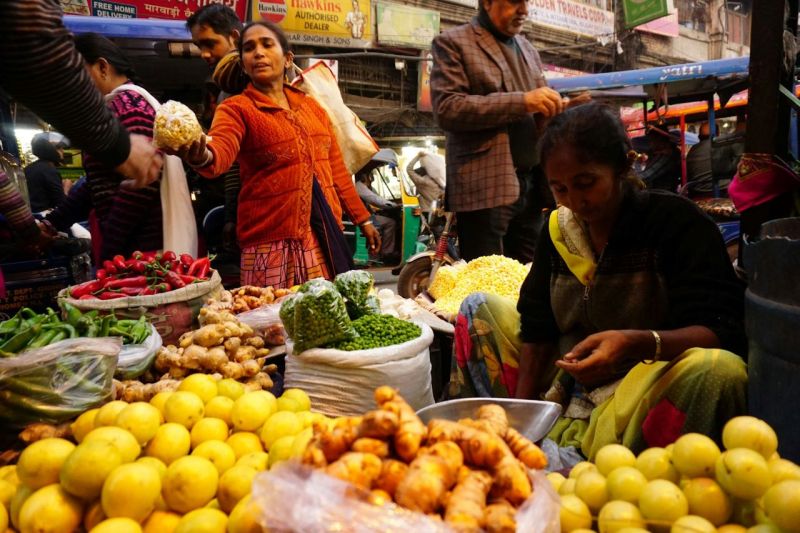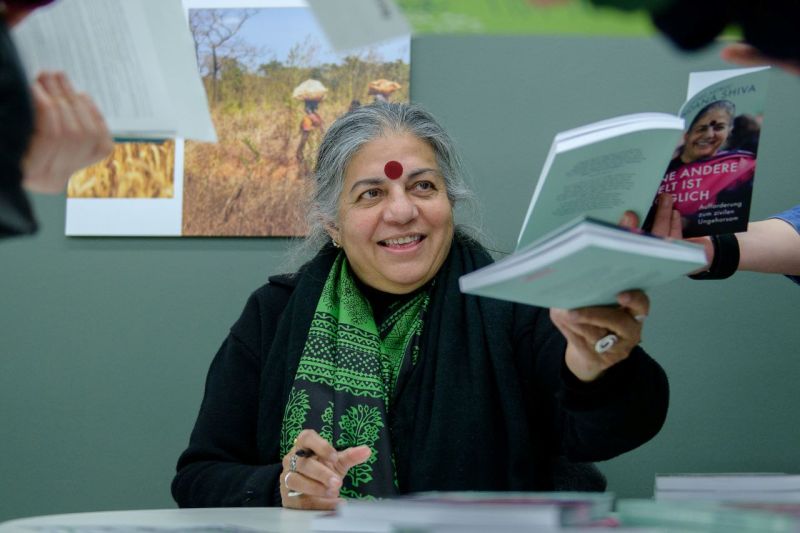Food stuff creation accounts for a lot more than a quarter of the world’s greenhouse gasoline emissions. But could we definitely feed the world’s expanding inhabitants while lightening our impact on our earth?
If you question Vandana Shiva, the response is a resounding sure. The veteran Indian scholar, creator and activist has put in decades battling significant-scale agribusiness passions and advocating for the rights of modest farmers in her dwelling place – who have again taken to the streets to demand truthful selling prices for their crops.
But how did we get right here, and is there a way back to meals sovereignty and wholesome soils for the world’s most populous place?
In this exceptional job interview, ThinkLandscape’s Suzanna Dayne asks Shiva about the legacy of the Environmentally friendly Revolution, what the long run retains for Indian agriculture – and how India and the world can forge a brighter food items future powered by character.
This discussion has been edited for duration and clarity.
You have a history in physics. What led you to turning into an environmental activist and leader in the natural agriculture movement?
Agriculture was not my decided on industry of research. My selected industry was quantum theory. I did my PhD in non-locality and hidden variables in quantum concept.
But I was compelled to seem at the Environmentally friendly Revolution, and I was inquiring a pretty simple dilemma as an outsider to the research of agriculture. My mother experienced opted to be a farmer when she grew to become a refugee throughout the partition of India in 1947. She had been a pretty senior instruction officer, but then she chose to be a farmer.
So, it is not that I was a stranger to agriculture. I was a stranger to the analyze of agriculture.
How did your ebook The Violence of the Environmentally friendly Revolution occur about?
In 1984, in Punjab, the place the Eco-friendly Revolution was initial used, fatal violence erupted. I was carrying out a important method for the United Nations College in Tokyo on conflicts in excess of resources.
I wrote to them – I mentioned, there is a significant conflict in this article. Folks have been killed, shot useless – 15,000 persons, and I want to recognize the roots of this conflict. They stated, “sure,” so I wrote my reserve.
In quantum idea, we have programs causation and contextual causation. So, when I called the ebook The Violence of the Inexperienced Revolution, I was on the lookout at the context that led to the violence and the farmers at that time.
It was definitely a farmer’s protest, and the farmers were being indicating: “We are residing underneath slavery. We really do not decide on our seeds. We don’t pick how we grow our crops.
“We don’t even come to a decision when the waters of our possess rivers will attain our farms, and we can not make a decision the price tag at which we will market what we improve. This is slavery.”
And what did you deduce from your investigate?
My reflections on the Eco-friendly Revolution come from 3 views. To start with, my ecological perspective, second, my quantum standpoint, and 3rd, my programs perspective.
I have under no circumstances ever seen factors in different compartments. I’ve constantly viewed the associations of a number of procedures and how they interact with every single other.
If you say the Environmentally friendly Revolution experienced a huge positive impact, no, it did not. Because appropriate from the starting, it shrunk the foods base of India. For Punjab by yourself, 250 species of crops applied to expand, and this was lowered to rice in 1 season and wheat in the following season.
So, I said: no, we cannot look at just monocultures and commodity yields. We require to glimpse at all round efficiency and the comprehensive biodiversity output. The overall food base in fact shrank.
Next, the Eco-friendly Revolution was launched in India in 1965 – a drought calendar year. Since the 1950s, the Ford Foundation, the Rockefeller Foundation, the Globe Financial institution and USAID experienced been hoping to introduce the Eco-friendly Revolution offer, which was fertilizers and seeds tailored to fertilizer.
But it was the drought that gave them the possibility, simply because that calendar year, India preferred to import much more wheat underneath the PL-480 application [a U.S. program, also known as Food for Peace, that provided food assistance on cash or credit terms to countries in need] to stabilize market price ranges.
It was not about hunger. It was stabilizing current market price ranges, and we were being informed: “no, you have to improve your agriculture. We will not mail you a lot more wheat except if you improve your agriculture.”
And right away, India had to adopt chemical substances. No one was speaking about making extra foodstuff. They ended up all conversing about promoting extra fertilizer, and fertilizers required the monocultures. That is why we shed variety.

But Norman Borlaug [a U.S. agronomist dubbed the ‘Father of the Green Revolution’] himself admitted that with fertilizers, agriculture desires 10 moments a lot more drinking water to develop the exact amount of foods. That is why Punjab, the land of five rivers, really immediately moved into drinking water famine.
And all-around the globe, if you just look at how lakes dry up, how underground drinking water disappears – you find industrial agriculture, and the Green Revolution is really just the identify in the ‘third world’ for industrial farming. It is the same factor.
Industrial farming is making use of inputs that arrive from market, rather of the soil generating its own fertility by the recycling of plant substance in organic and natural make a difference. Just one of the issues that doesn’t get talked about plenty of is the worst greenhouse gasoline: nitrous oxide, which is 300 occasions additional harming than carbon dioxide.
In my guide Soil Not Oil, I assessed that 50 per cent of greenhouse gases arrive from an industrial meals program: in manufacturing, in processing, prolonged-length transportation, and many others. There’s a most cancers prepare that leaves Punjab since most cancers has develop into an epidemic there mainly because of the chemical substances.
What motivated you to make the natural movement in India?
Right after I wrote The Violence of the Inexperienced Revolution, I made a pledge. I reported, I’m likely to seek out nonviolent farming devices. If this is far too crucial, I just cannot just do a research and wander on. So, I introduced the natural and organic movement.
We rediscovered people today like Albert Howard [an English botanist who worked in India between 1905 and 1931]. His guide An Agricultural Testomony designed the natural and organic movement all over the world. As he stated: “I was despatched to make improvements to Indian agriculture, but I could not enhance what the farmers were being executing. So, I realized from them. I built them my professors.” And he uncovered the composting program from Indian peasants.
So, I begun to make establishments like Navdanya, do the analysis, and last but not least do the apply, and it has grown. To day, we’ve skilled much more than 2 million farmers in likely chemical-absolutely free.
It’s crucial that we shift from measuring yield for every acre to measuring biodiverse outputs and nourishment for each acre. Our perform reveals that we could feed double India’s population by way of biodiversity without the need of substances when we target on diet instead than yield.
India’s populace could have all the diet it demands if we grew biodiversity relatively than chemical monocultures – and ecological farming makes a lot extra of both of those.

So you’re declaring that you could feed the enormous inhabitants of India organically? How would you accomplish that?
You will need to give up two things that have develop into an addiction. A person is what I simply call the monoculture of the head: when you only see a monoculture and you do not see the range, and therefore, you really don’t cultivate it.
The second is the really like for bigness. Major governments enjoy significant things. It provides them energy and management. Organizations really like bigness too. That is why there are 5 corporations controlling all chemical substances inputs and managing the seed.
If the world had additional compact farms, we’d have extra food for people. But as a substitute, what we are accomplishing is destroying smaller farms, producing these megafarms that demand a lot of assets, tons of chemical substances and a lot of strength inputs. They count on electrical power slaves – the invisible people today who perform to produce the chemical substances that drive the mechanization on large farms.
What purpose could agroforestry engage in?
My father was a forester, and he employed to explain to us there were being extra trees on Indian farms than in our forests, for the reason that our farms were being like forests. Which is what Albert Howard discovered: farming in India is farming like a forest, and our small farms are complete of farm trees. All the wants you have arrive from the farm trees and agroforestry. We promoted our individual farm, which was barren land and is now complete of huge trees.
We also did a piece of study two decades in the past when the warmth was extremely powerful. We claimed: let us measure the soils close to the farm trees and on neighboring farms, which have destroyed their trees and employed chemical substances. And the effects blew our minds.
The temperature change was 25 degrees Celsius mainly because of the trees on the soil, and the dampness difference was 15 p.c. So, if there is a drought, the bare soils will bring about the crop to fall short. But the trees guard humidity, and the organic and natural issue protects the dampness climate.
So numerous of the farm trees engage in these kinds of an important part, not just in farming but in all essential wants, like neem trees that give pest management. It was patented by the U.S. authorities and a chemical organization [WR Grace], and for 11 decades, I fought from that. I known as it biopiracy, and we defeated a superpower and a large company.
If you are up versus these big businesses, how can you unfold natural and organic farming strategies all over India?
Look at all the revenue that goes into advertising and marketing substantial-scale monocultures and industrial farming, and then glimpse at how compact businesses like us work. If the resources that are put into generating megafarms were place into marketing ecological natural and organic strategies in agriculture, we would not just include India. We could deal with the planet.
It’s not a absence of knowledge, and it is not a deficiency of dedicated folks. It is a deficiency of means. I can go to 100 villages with the type of groups that I can make now, but if I experienced 1 million people today, we’d cover all of India. So, the technique does not deficiency the potential to spread.
They also use the word ‘scaling up,’ a term I simply cannot stand. In my globe, there is no “up” – there are no hierarchies. We scale out. If you scale up a modest farm, it will become a million-acre farm. But scaling out, a single small farm can grow to be 1 million farms.

If you had a magic wand and could do 1 thing to strengthen the foodstuff source in India, what would that be?
Very first, the procedure will have to shift to a much more electrical power-dense, not power-consuming process, and a more biodiverse intense method. Preserve the biodiversity of seeds – of open-pollinated, renewable seeds.
Second, enable the wonderful biodiversity in the soil function with you. Proper now, it’s been crippled. Just about every micronutrient has disappeared. So, I would absolutely shift from exterior-input fossil agriculture to an ecological agriculture wherever you work with the soil, you work with the crops.
The 3rd detail is to create decentralized marketplaces and get community. When I go to eastern India, each and every village has a marketplace, and when you are providing domestically, you promote what that local community likes: the vegetables they eat in their delicacies. The farmers will expand it the persons will try to eat it.
It is a closed cycle, 100 p.c going in the community. Rural spots don’t get impoverished – they prosper. So, seed, ecological agriculture and decentralized market place techniques: that’s the magic wand.




